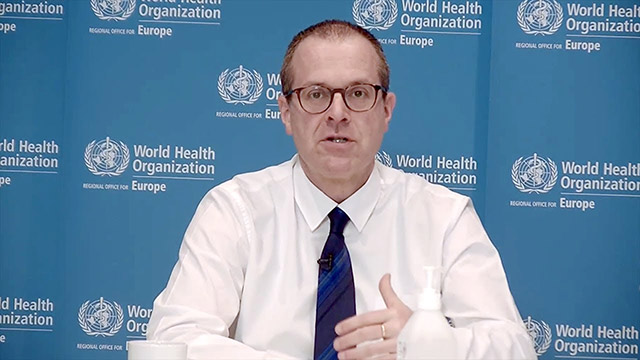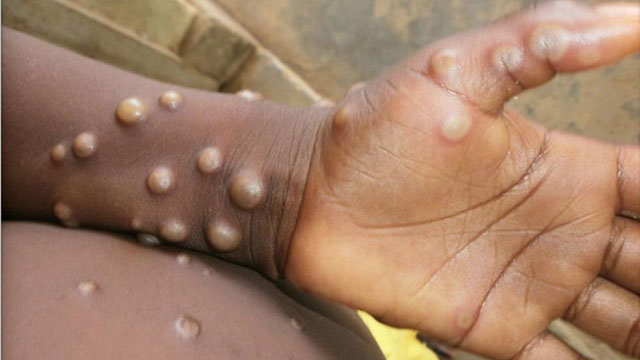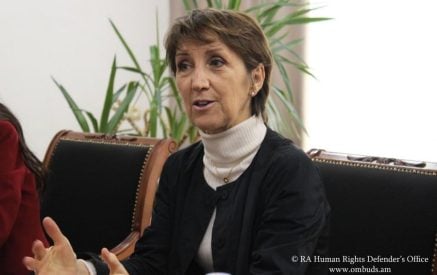Statement by WHO/Europe Regional Director, Dr Hans Henri P. Kluge
We have entered 2022 with the countries of Europe and central Asia still under intense pressure from COVID-19.
Today, the Omicron variant represents a new west to east tidal wave sweeping across the Region, on top of the Delta surge that all countries were managing until late 2021. How each country now responds must be informed by its epidemiological situation, available resources, vaccination uptake status and socio-economic context.
The Region saw over 7 million newly reported cases of COVID-19 in the first week of 2022, more than doubling over a two-week period.
Read also
As of 10th January, 26 countries report that over 1% of their population is catching COVID-19 each week.
Mortality rates remain stable and continue to be highest in countries with high COVID-19 incidence, combined with lower vaccination uptake.
50 of the 53 countries in Europe and central Asia have now reported cases of Omicron. It is quickly becoming the dominant virus in western Europe and is now spreading in the Balkans.
At this rate, the Institute for Health Metrics and Evaluation (IHME) forecasts that more than 50% of the population in the Region will be infected with Omicron in the next 6-8 weeks.
Data collated in recent weeks confirms that Omicron is highly transmissible – because the mutations it has enable it to adhere to human cells more easily, and it can infect even those who have been previously infected or vaccinated.
Allow me to reiterate that the currently approved vaccines do continue to provide good protection against severe disease and death, including for Omicron.
But because of the unprecedented scale of transmission, we are now seeing rising COVID-19 hospitalizations. It is challenging health systems and service delivery in many countries where Omicron has spread at speed and threatens to overwhelm in many more.
Once again, the greatest burden of responding to this pandemic is being carried by our health and care staff, and other essential front-line workers. They also carry the highest exposure to the virus. Acknowledging the huge lift by the health workforce, as we enter this third pandemic year, I call for more support for their mental health and wellbeing. Cater to their physical and mental wellbeing by listening and addressing their needs and concerns, by designating a mental health focal point or person in each facility, for example.
I am also deeply concerned that as the variant moves east, we have yet to see its full impact in countries where levels of vaccination uptake are lower, and where we will see more severe disease in the unvaccinated. Taking the example of Denmark, where Omicron cases have exploded in recent weeks, the COVID-19 hospitalization rate for unvaccinated patients was 6-fold higher than for those who were fully vaccinated in the week over Christmas. Data from the UK Obstetric Surveillance System shows 96% of pregnant women admitted to hospital with COVID-19 symptoms between May and October 2021 were unvaccinated, a third of whom required respiratory support.
As we brace ourselves for what lies ahead, I have three messages today, to manage the impact on health services, economies and societies.
Firstly, for countries not yet hit by the Omicron surge, there is a closing window of opportunity to act now and plan for contingencies. Omicron moves faster and wider than any SARS-CoV-2 variant that we have previously seen. We therefore urge these countries to mandate the use of high-quality masks in closed and indoor settings, and ensure that vulnerable individuals have access to them – That people are supported to get their full vaccine series and booster dose as soon as it becomes available – making sure health workers and other essential workers have early access to booster doses to keep services going. That the public is made aware of the importance of immediate isolation if experiencing symptoms, as the virus spreads most in the few days before and after symptoms first appear, and that, if needed, they are knowledgeable on how to self-test and know how to inform their contacts if they have symptoms or test positive.
This is a precious moment, to prepare response systems – by increasing the supplies of tests and making them widely accessible free of charge at pharmacies, workplaces and in communities, and making them available to critical workers.
Secondly, where the Omicron surge has begun, the priority should be to avoid and reduce harm among the vulnerable and minimize disruption to health systems and essential services.
This means prioritizing vulnerable people for primary course and booster doses, and advising them to avoid closed, crowded spaces, offering the possibility to work remotely wherever possible until the infection surge passes. Where testing is constrained, prioritize PCR testing for individuals who are at risk of developing severe disease, health and other critical workers, inpatients in health facilities, and the first symptomatic individuals in a high-risk setting, for example long-term care facilities, of a suspected outbreak. Deploy rapid tests more widely. Where contact tracing is overwhelmed, prioritize contacts at high risk of infection and contacts at high risk of severe outcome, i.e., household or vulnerable contacts, and high-risk settings. Where hospital resources are constrained, step up primary care in the early management, screening, triage, and clinical assessment of cases to avoid unnecessary admissions to hospitals.
Any decision to shorten recommended quarantine or isolation periods should be taken in combination with negative COVID-19 tests and only when considered essential to preserve critical service continuity. Any decisions to do so must be taken with careful weighing of the risks and benefits of doing so.
My third point is about schools. Keeping schools open has important benefits for children’s mental, social and educational well-being. Schools should be the last places to close and the first to reopen.
And because of Omicron’s greater transmissibility, the recommendations we have made for educational settings remain essential:
Ensure ventilation, hand hygiene and use of appropriate face masks.
Include teachers and other school staff in priority population groups offered COVID-19 vaccine, and boosters. Offer vulnerable children and children who come into contact with vulnerable adults, the COVID-19 vaccine, in countries where it is available.
Additionally, countries may wish to consider reviewing the protocols on testing, isolation and quarantine of classroom contacts to minimize disruption to learning, mitigating these risks as far as possible with good ventilation and mask usage.
Looking ahead, the numbers of infected people are going to be so high in many countries that schools may be unable to keep all classes open all the time, due to a lack of staff. This winter, it is advisable to make arrangements for online learning alongside physical presence, so children can continue with their education when they are unable to attend school in person.
In summary, the 5 plus one pandemic stabilizers that have guided our response in recent months, are as relevant for tackling Delta or Omicron today as they have ever been. These remain our mantra: 1. Vaccination, 2. Third doses or boosters. 3. Increased mask use. 4. Ventilation of closed spaces. 5. The application of new clinical protocols.
Plus, our overarching drive must be towards vaccine sharing and solidarity – across age-groups, sectors, borders, and political lines.




























































